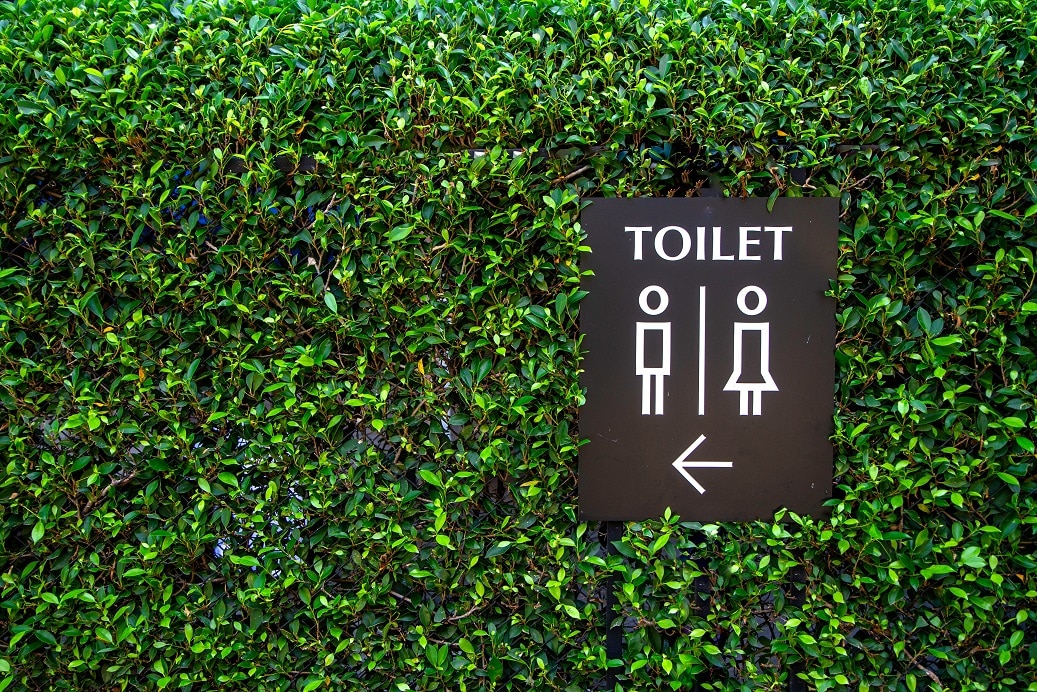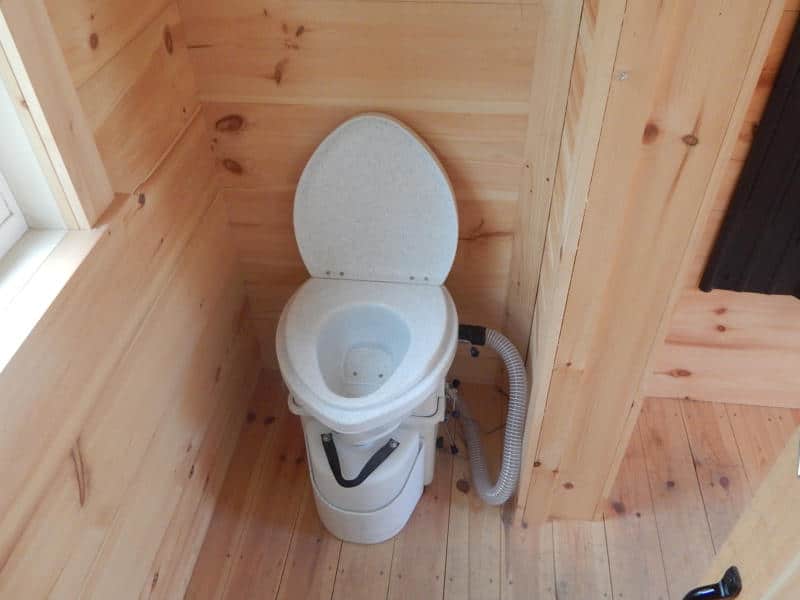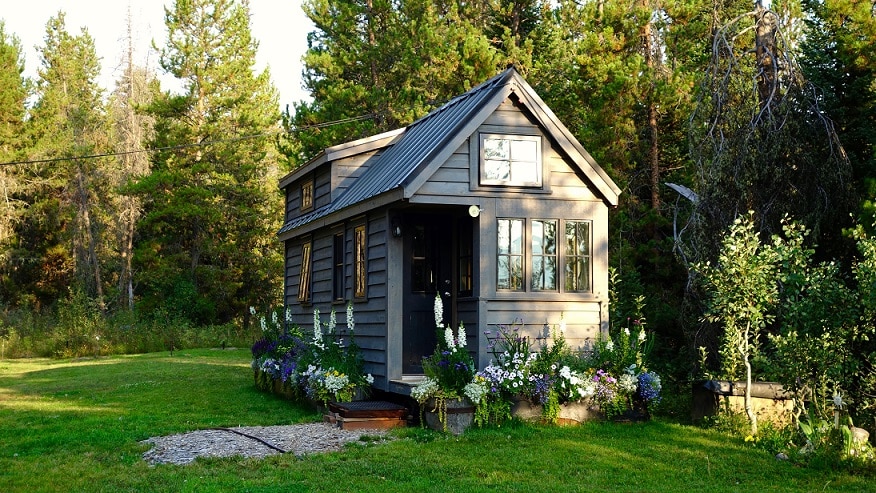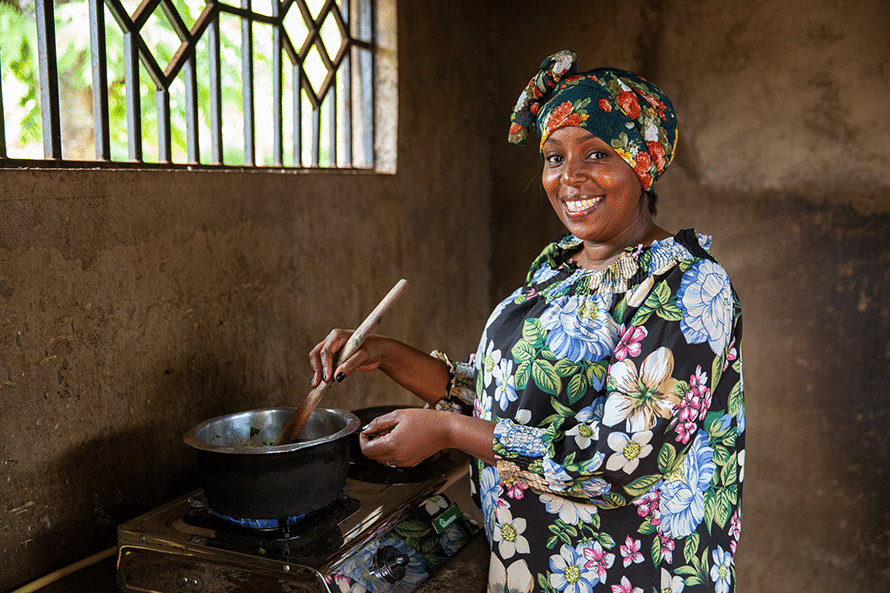
What is a Composting Toilet?
A composting toilet is a device that collects and composts human waste, allowing you to transform the unwanted byproduct into a helpful material for your lawn or garden. While serving the same purpose as a conventional privy or outhouse, this system is entirely different, having a series of environmental benefits.
Composting toilets are an effective waste management solution for off-grid houses, mobile homes, and boats. At the same time, they can be a top choice for people who simply want to minimize their impact on the environment.
Most composting toilets are also called “dry toilets” since they don’t flush and rely on waterless composting.
How Does a Composting Toilet Work?
Composting toilets decompose human waste using either anaerobic or aerobic digestion.
- Aerobic digestion produces compost — microorganisms decompose organic materials and create a compost-like product that can be used to make compost or fertilizer. The system is safe, although not all pathogens are eliminated. The finished product may also be sent to a secondary system, often for another round of composting, to provide additional composting time to further eliminate pathogens.
- Anaerobic digestion produces methane (often referred to as biogas) and an organic residue that can be used as fertilizer. In this case, the decomposition occurs inside a sealed chamber, also called a digester. The biogas resulting from this process is considered a renewable energy source often used as cooking gas or heating.
A waterless composting toilet that uses aerobic digestion requires using additional materials, such as peat moss, coconut fibers, sawdust, woodchips, or shredded leaves to facilitate the process. The most widely used carbon additive is sawdust, which is inexpensive and easily accessible.
Main Advantages of Purchasing a Composting Toilet
- Waterless composting toilets can decrease reliance on conventional plumbing. Consequently, you don’t need to worry about leaks or pipe management.
- They lower the amount of wastewater you produce. This way, you can save up to 35 gallons (130 liters) of wastewater per person every day.
- Using a composting toilet helps you minimize your environmental impact. One of the environmental benefits that come with composting toilets is minimum water pollution by reducing the amount of wastewater produced in your household. Cleaning wastewater contributes to air pollution, requires a high energy input, and creates additional greenhouse gas emissions into the atmosphere.
- By lowering water consumption, you also save money in the long run.
- They produce compost that can boost plants and enhance soil properties. Compost contains a wide range of micronutrients and elements like nitrogen, phosphorus, and potassium, vital to plant development and soil balance.
- The best composting toilet systems are a cost-effective workaround for situations where plumbing or septic systems are unavailable. As these systems come in multiple sizes and forms, they can meet the needs of various housing solutions, from off-grid homes to motorhomes and boats.
An Overview of the Best Composting Toilets
1) Porta Potti 92306 White Thetford Corp
Porta Potti 92306 White Thetford Corp has a battery-operated flush and an ergonomic seat height. It is considered one of the best portable composting toilets on the market.
Its modern design and curve separators enable you to manage waste effortlessly and safely, while its storage tank capacity supports more than 50 flushes during a single fill. It is appropriate for group use and requires less time to maintain than similar products in the same price range.
The toilet has a built-in tank level indicator that helps you understand when the tank needs to be emptied.
2) Thinktank Composting Toilet
The Thinktank Composting Toilet aims to fix all the significant issues homeowners have with compost toilets. The system has separate air intake and airtight exhaust pipes to ensure no odors get through.
This composting toilet is easy to clean, using biodegradable bags to contain the waste. Users don’t need to flip a handle or add carbon additives to maintain functionality. Due to its sealed containers, the toilet system doesn’t attract any pests or insects.
3) Sun-Mar GTG Toilet
The Sun-Mar GTG Toilet is more cost-effective than many other versions if you need a toilet with a medium capacity. It’s intended for household usage by one adult or for seasonal use by up to three individuals and plugs into a standard 110-volt outlet. As a general rule, you’ll need to add a cup of bulking material daily for each person.
The GTG model is best suited for portable restrooms and small spaces. These toilets are well-liked because of their small size, easy installation, and comparable function to a cassette toilet. However, taking accurate space measures is recommended before the purchase, as the manufacturer doesn’t accept returns on this product.
4) Separett Villa 9215
Separett Villa 9215 AC/DC separates urine and solid waste, lessening the stench and minimizing the amount needed to handle. This composting toilet includes a fan with AC/DC adapters. A screen rotates and covers the solid waste container simultaneously as you sit down. To make cleaning more manageable, you can use a biodegradable bag placed within the container.
It looks and “feels” more like a standard toilet because there is no need to add bulking material to control odors and speed up the composting process. A kid seat is also available and can be purchased separately.
5) Nature’s Head Self-Contained Composting Toilet
Nature’s Head Self-Contained Composting Toilet is a reliable and easy-to-use system. It has a side-mounted “spider” handle for churning the solid waste inside the tank and diverting urine into an easily removable container. The waste storage tank can accommodate two people using it full-time and requires emptying every four to six weeks (approximately 80 uses). However, the urine container needs to be emptied every other day.
An electric fan pulls fresh air and pushes odors out, helping maintain air quality inside your bathroom. The fan operates on 12V power, which can also be converted to 110V using a separately sold kit.

What to Pay Attention to When Selecting a Composting Toilet
Finding the best composting toilet requires research and an evaluation of your current and future needs. Before purchasing such a system, examples of elements include, but aren’t limited to, weight, size, price, maintenance, capacity, type of composting system, and dimension.
Let’s see how these main characteristics can influence your choice.
- The toilet’s capacity determines how much waste it can contain without overflowing. It influences the frequency of usage of your composting toilet and the number of people who can use it regularly. Small capacity is best suited for mobile homes, and you’ll need a bigger tank capacity if you’re buying it for an off-grid house that hosts a family of four, for example.
- The type of composting toilet also influences usability. Central composting units are more suitable for larger parties, while self-contained restrooms cater to smaller crowds. Self-contained toilets are also easy to install because they don’t need additional tanks.
- The frequency of use will impact maintenance requirements. As a general guideline, most composting toilets have similar maintenance procedures. How solids are combined and the easiness of taking out the composting tank are the game-changers, so paying attention to these details can help make a better decision.
- Consider your projected usage of the best compostable toilet for the money, as initial installation costs can get high. Additionally, you want to consider how much time you’re willing to devote to upkeep and how important general usability is to understand better what value you can get for each price range.
- Most composting toilets are relatively simple to install, but specific models call for vents, electricity, or drainage systems. The easier a system is to install, the fewer the functions included and the higher the level of manual maintenance involved in the long run.
Centralized vs. Self-Contained Compost Toilet Systems
Self-contained compost toilets
Self-contained compost toilets serve as both the composting chamber and the toilet, and they come in two versions, electric and non-electric. The decomposition happens in the tank at the bottom of the bowl, where waste is contained.
The advantages of a self-contained composting toilet system are the ability to serve mobile homes and space-saving.
Most models have roomy seats yet are small enough to fit in small spaces. Moreover, you can opt for a product with a urine separator that doesn’t require flushing to optimize tank capacity.
Most self-contained compost toilets have a simple design that makes them simple to disassemble for emptying.
Centralized compost toilets
Centralized compost toilets separate the composting tank from the bowl, so the decomposition process takes place outside the restroom. It’s similar to a flush toilet, as the waste is transported from the bowl through a system of pipes or an adaptor tube. The difference is that human waste goes to a composting container, not the sewage system or septic tank.
They’re more efficient at producing fully decomposed, useable compost than self-contained solutions because the time between cleanouts is more extended, giving enough time to bacteria to fully decompose human waste.
Even the best composting toilets can require small amounts of water to help move waste when the composting tank is not close enough to the bowl. These low flush systems can use as little as half a liter of water per flush. The alternative for off-grid homes can be a system that uses vacuum pressure instead of water.
What Is the Composting Toilet Cleaning Process?
The lack of water and inability to flush the waste may make you believe that composting toilets are difficult to clean. This is a myth, as the best composting toilets can easily respect the same hygiene standards as any flush toilet.
The most popular cleaning method among compost toilet users is a spray bottle with a solution of vinegar or baking soda and water. Then you can use a regular toilet brush to complete the process. It’s enough to spray and regularly wipe to maintain a clean and healthy environment.
As with regular toilets, the lid and seat require the most frequent cleaning. For these elements, you want to use natural detergents only, not to impact the composting process. Store-bought cleaners aren’t recommended. While they can provide a thoroughly clean bowl, they’ll also eliminate beneficial bacteria responsible for decomposition.
Are Composting Toilets Suitable for Boats and Small Houses?
Some composting toilets are perfect for tiny houses and boats, depending on their size. As a general rule, you’ll want a self-contained system that is easy to install and maintain.
Here are some of the things to consider when picking the best composting toilet in these specific situations:
- Some composting toilets can take up a lot of space, so you must measure adequately before picking the best product.
- Look for a solution that allows you to keep an eye on the compost tank to understand when it’s the right time to remove the compost. If the tank fills up too much, emptying it can be messy.
- Systems that catch and drain liquid into a portable holding tank with an urine-diverting system are best suited for small spaces and boats.

Final Thoughts
Composting toilets are practical and sustainable tools for storing and managing human waste. They’re a greener option than conventional toilets and reduce the amount of electricity and flush water that would otherwise be required to clean and treat wastewater.
Composting toilets come in a variety of sizes and satisfy various purposes. Since most models are intricate, expensive systems, you should conduct your research and find the top options for your home before making a purchase.
Composting Toilet FAQs
1) How much maintenance does a composting toilet needs?
It depends on the system you opt for and the number of people using it. In general, self-contained solutions require frequent emptying, while a centralized system is more likely to function for months with no need for interventions. Maintenance can become minimal if you go for a toilet kit that uses anaerobic digestion to produce biogas.
Urine diverting toilets and dry systems, in general, are likely to need less maintenance.
2) How do I keep pests and bugs away from my composting toilet?
If you follow the manufacturer’s instructions and adequately maintain the toilet, you won’t have to deal with pests. Compost gone bad can draw fungus gnats, but if you keep moisture levels inside the composting tank close to 50% or slightly below, no bugs will survive in the environment.
Last but not least, ensure the composting toilet system is permanently sealed when not in use so it doesn’t attract flies, bugs, and other insects.
3) Why are composting toilets so expensive?
Not all models have the same price, so you can find economic alternatives and even build your own composting toilet from scratch. However, a complex system that integrates multiple features and requires minimum maintenance can have significant upfront installation costs. That’s because they imply a series of elements and technologies that provide a safe, sustainable waste management system. It’s important to note that a practical composting toilet is an investment that will also enable you to reduce water consumption and your overall carbon footprint, among other environmental benefits.
4) Are composting toilets legal?
Yes, composting toilets are legal as long as they meet specific standards that can vary by state or region. You must learn about the particular requirements in your area and ensure that the products you choose meet your needs. Composting toilets are usually seen as most suitable for mobile houses and off-grid properties, but they can be easily integrated into other areas where connecting to the sewage system is not an option.





